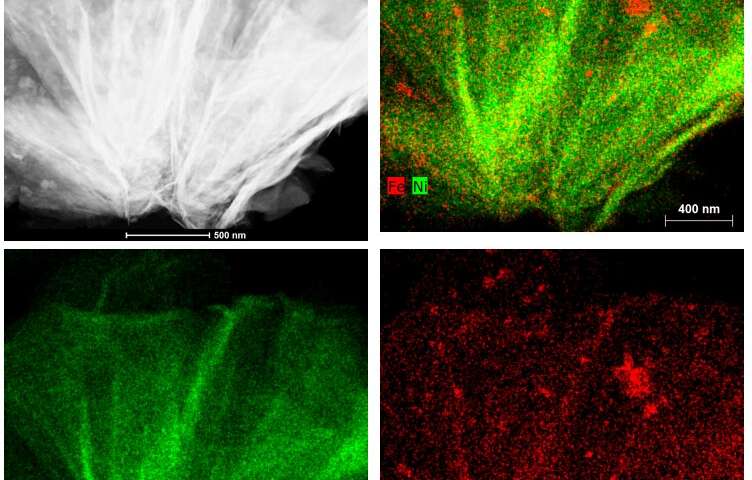Researchers design an improved pathway to carbon-neutral plastics (24/11/2019)
Researchers
from U of T Engineering and Caltech have designed a new and improved system for
efficiently converting CO2, water, and renewable energy into ethylene -- the
precursor to a wide range of plastic products, from medical devices to
synthetic fabrics -- under neutral conditions. The device has the potential to
offer a carbon-neutral pathway to a commonly used chemical while enhancing
storage of waste carbon and excess renewable energy.

Clean air research converts toxic air pollutant into industrial chemical (23/11/2019)
A
toxic pollutant produced by burning fossil fuels can be captured from the
exhaust gas stream and converted into useful industrial chemicals using only
water and air thanks to a new advanced material developed by an international
team of scientists.

Using aluminum and lasers to make bendable glass (18/11/2019)
An
international team of researchers has found a way to make bendable glass using
lasers fired at crystalline aluminum oxide. In their paper published in the
journal Science, the group describes their technique and the features of
the glass they produced. Lothar Wondraczek with the University of Jena has
published a companion piece in the same journal issue outlining the history of
scientists attempting to overcome the brittleness of glass.

Breaking carbon dioxide faster, cheaper, and more efficiently (18/11/2019)
A
new catalyst breaks carbon dioxide into useful chemicals faster, cheaper, and
more efficiently than the standard method, reports a team of researchers in
this week's issue of PNAS. The discovery could make it possible to
economically turn carbon dioxide into fuels.

Research team develops tiny low-energy device to rapidly reroute light in computer chips (18/11/2019)
Researchers
at the National Institute of Standards and Technology (NIST) and their
colleagues have developed an optical switch that routes light from one computer
chip to another in just 20 billionths of a second—faster than any other similar
device. The compact switch is the first to operate at voltages low enough to be
integrated onto low-cost silicon chips and redirects light with very low signal
loss.
New material breaks world record for turning heat into electricity (18/11/2019)
A
new type of material generates electrical current very efficiently from
temperature differences. This allows sensors and small processors to supply
themselves with energy wirelessly.

A method for self-supervised robotic learning that entails setting feasible goals (18/11/2019)
Reinforcement
learning (RL) has so far proved to be an effective technique for training
artificial agents on individual tasks. However, when it comes to training
multi-purpose robots, which should be able to complete a variety of tasks that
require different skills, most existing RL approaches are far from ideal.

New artificial intelligence system automatically evolves to evade internet censorship (18/11/2019)
Internet
censorship by authoritarian governments prohibits free and open access to
information for millions of people around the world. Attempts to evade such
censorship have turned into a continually escalating race to keep up with
ever-changing, increasingly sophisticated internet censorship. Censoring
regimes have had the advantage in that race, because researchers must manually
search for ways to circumvent censorship, a process that takes considerable
time.

New electrodes could increase efficiency of electric vehicles and aircraft (11/11/2019)
The rise in popularity of
electric vehicles and aircraft presents the possibility of moving away from
fossil fuels toward a more sustainable future. While significant technological
advancements have dramatically increased the efficiency of these vehicles,
there are still several issues standing in the way of widespread adoption.

New photonic liquid crystals could lead to next-generation displays (11/11/2019)
A
new technique to change the structure of liquid crystals could lead to the
development of fast-responding liquid crystals suitable for next generation
displays—3-D, augmented and virtual reality—and advanced photonic applications
such as mirrorless lasers, bio-sensors and fast/slow light generation,
according to an international team of researchers from Penn State, the Air
Force Research Laboratory and the National Sun Yat-sen University, Taiwan.









